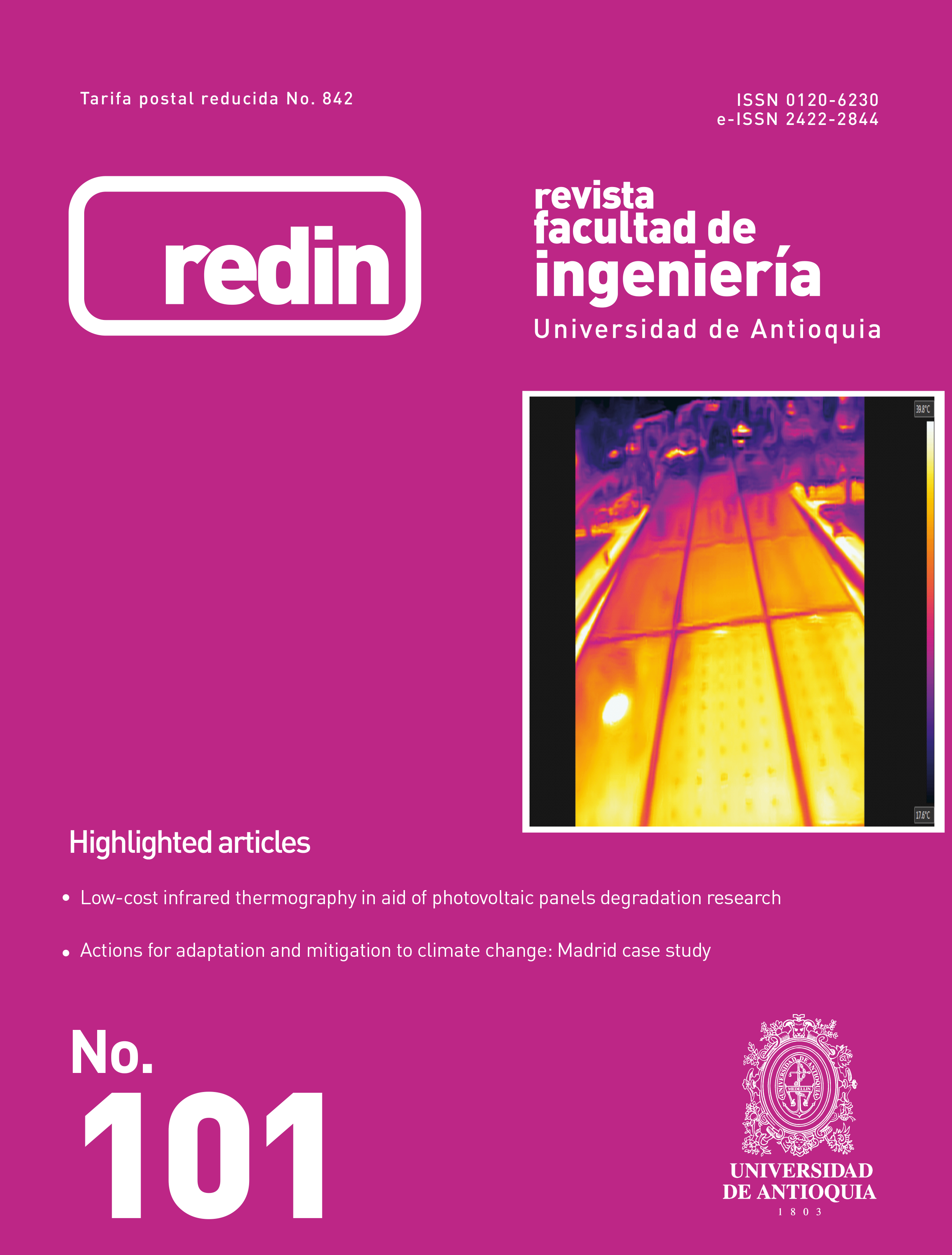The impact of inventory holding costs on the strategic design of supply chains
DOI:
https://doi.org/10.17533/udea.redin.20200692Keywords:
network analysis, inventories, optimization, simulation modelsAbstract
The explicit consideration of inventory holding costs for the strategic design of supply chains has not been sufficiently addressed in scientific literature. A possible cause is that usually supply chain optimization models are deterministic and linear or mixed-integer linear, while forecasting methods and inventory control systems are stochastic and non-linear. It is clear, however, that inventory costs might have a significant impact on optimal supply chain configuration and on distribution systems expansion or contraction. This article presents a practical strategy that considers an item-by-item inventory control system by means of a Monte Carlo simulation model as a starting point to include inventory holding costs in a supply chain optimization model. Three strategies to include inventory costs in the objective function were analyzed: The Square Root Law (SRL), the potential functions that relate average inventory with warehouse throughput, and the estimation of average inventories by simulation. The results suggest that the SRL should not be used unless unusual assumptions hold and that potential functions are a very good approximation to consider inventory costs for supply chain configuration.
Downloads
References
J. F. Shapiro and S. N. Wagner, “Strategic inventory optimization,” Journal of Business Logistics, vol. 30, no. 2, September 2009. [Online]. Available: https://doi.org/10.1002/j.2158-1592.2009.tb00117.x
M. J. Cortinhal, M. J. Lopes, and M. T. Melo, “Dynamic design and re-design of multi-echelon, multi-product logistics networks with outsourcing opportunities: A computational study,” Computers & Industrial Engineering, vol. 90, December 2015. [Online]. Available: https://doi.org/10.1016/j.cie.2015.08.019
E. da Silveira and J. Q. Li and J. Parra and D. Borenstein, “Simple heuristic for the strategic supply chain design of largescale networks: A Brazilian case study,” Computers & Industrial Engineering, vol. 113, November 2017. [Online]. Available: https://doi.org/10.1016/j.cie.2017.07.017
A. Mohammadi, A. Abbasi, M. Alimohammadlou, M. Eghtesadifard, and M. Khalifeh, “Optimal design of a multi-echelon supply chain in a system thinking framework: An integrated financial-operational approach,” Computers & Industrial Engineering, vol. 114, December 2017. [Online]. Available: https://doi.org/10.1016/j.cie.2017.10.019
R. H. Ballou, “Estimating and auditing aggregate inventory levels at multiple stocking points,” Journal of Operations Management, vol. 1, no. 3, February 1981. [Online]. Available: https://doi.org/10.1016/02726963(81)90017-6
R. H. Ballou, “Evaluating inventory management performance using a turnover curve,” International Journal of Physical Distribution & Logistics Management, vol. 30, no. 1, February 2000. [Online]. Available: https://doi.org/10.1108/09600030010307993
R. H. Ballou, “Unresolved issues in supply chain network design,” Information Systems Frontiers, vol. 34, no. 4, December 2001. [Online]. Available: https://doi.org/10.1023/A:1012872704057
R. H. Ballou, “Expressing inventory control policy in the turnover curve,” Journal of Business Logistics, vol. 26, no. 2, 2005. [Online]. Available: https://doi.org/10.1002/j.2158-1592.2005.tb00209.x
P. A. Miranda and R. A. Garrido, “Incorporating inventory control decisions into a strategic distribution network design model with stochastic demand,” Transportation Research Part E:Logistics and Transportation Review, vol. 40, no. 3, May 2004. [Online]. Available: https://doi.org/10.1016/j.tre.2003.08.006
K. L. Croxton and W. Zinn, “Inventory considerations in network design”, journal of business logistics,” Transportation Research Part E:Logistics and Transportation Review, vol. 26, no. 1, March 2005. [Online]. Available: https://doi.org/10.1002/j.2158-1592.2005.tb00197.x
G. Oeser and P. Romano, “An empirical examination of the assumptions of the Square Root Law for inventory centralisation and decentralization,” Transportation Research Part E:Logistics and Transportation Review, vol. 54, no. 8, August 2015. [Online]. Available: https://doi.org/10.1080/00207543.2015.1071895
B. Fleischmann, “The impact of the number of parallel warehouses on total inventory,” Transportation Research Part E:Logistics and Transportation Review, vol. 38, October 2016. [Online]. Available: https://doi.org/10.1007/s00291-016-0442-2
E. A. Silver, D. F. Pyke, and R. Peterson, Inventory Management and Production Planning and Scheduling, 3rd ed. New York: John Wiley & Sons, 1998.
R. G. Brown, Encyclopedia of Production and Manufacturing Management, 1st ed. Holt Rinehart & Winston, 1967.
Published
How to Cite
Issue
Section
License
Copyright (c) 2020 Revista Facultad de Ingeniería Universidad de Antioquia

This work is licensed under a Creative Commons Attribution-NonCommercial-ShareAlike 4.0 International License.
Revista Facultad de Ingeniería, Universidad de Antioquia is licensed under the Creative Commons Attribution BY-NC-SA 4.0 license. https://creativecommons.org/licenses/by-nc-sa/4.0/deed.en
You are free to:
Share — copy and redistribute the material in any medium or format
Adapt — remix, transform, and build upon the material
Under the following terms:
Attribution — You must give appropriate credit, provide a link to the license, and indicate if changes were made. You may do so in any reasonable manner, but not in any way that suggests the licensor endorses you or your use.
NonCommercial — You may not use the material for commercial purposes.
ShareAlike — If you remix, transform, or build upon the material, you must distribute your contributions under the same license as the original.
The material published in the journal can be distributed, copied and exhibited by third parties if the respective credits are given to the journal. No commercial benefit can be obtained and derivative works must be under the same license terms as the original work.










 Twitter
Twitter